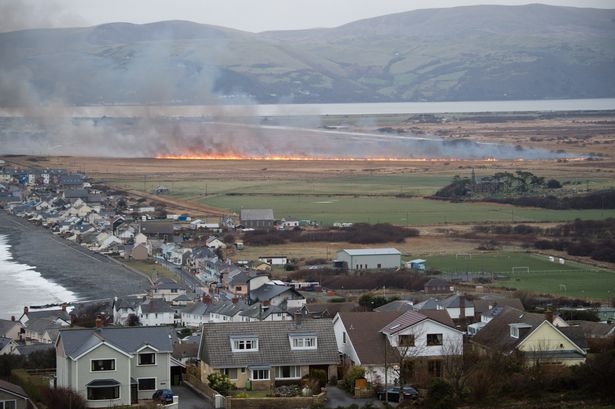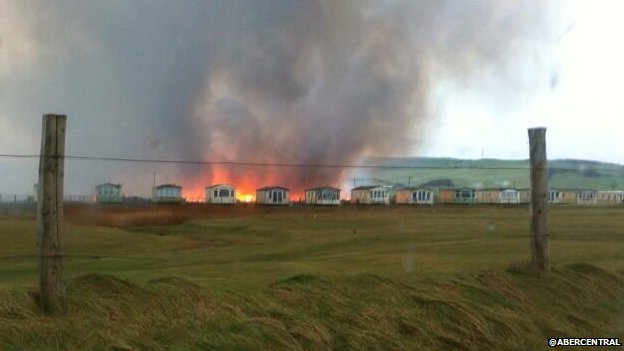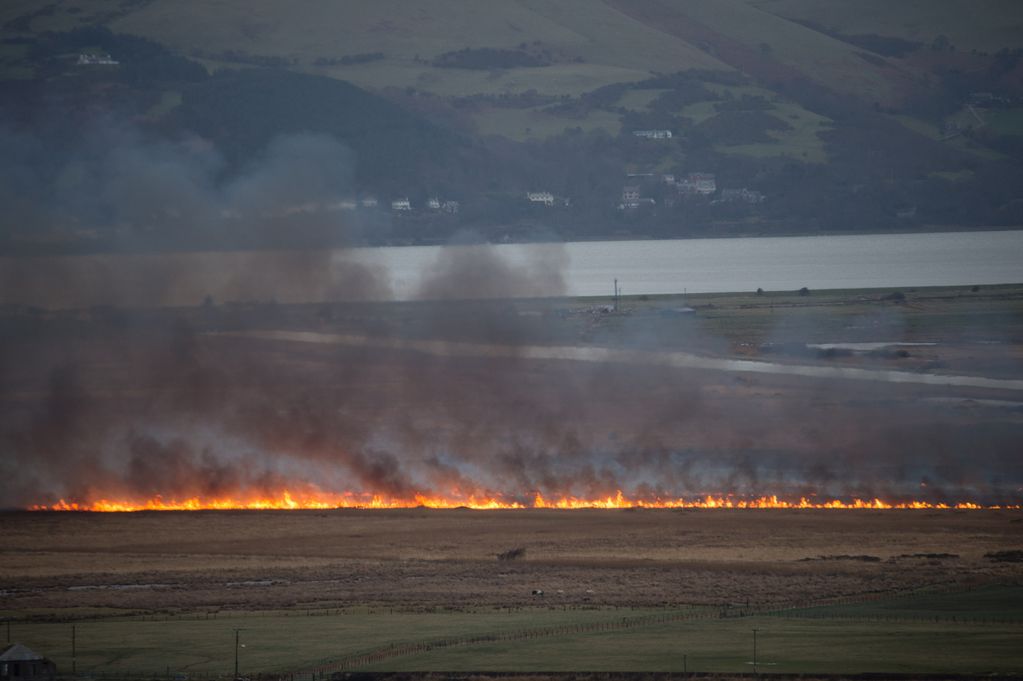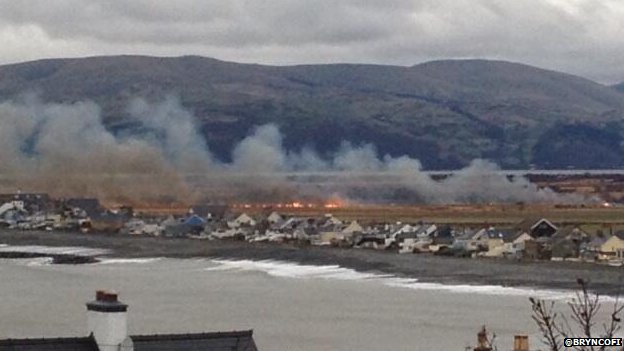
Large parts of Cors Fochno (Borth Bog) wetland nature reserve are on fire
Firefighters from Aberystwyth are tackling a major fire at bog land in Borth, near Aberystwyth.
The first call came at 5.20am, but fire crews were having difficulty accessing the land where the fire is raging because of the terrain.
A spokeswoman for Mid and West Fire Service said that around a hectare of land was alight, and that fire crews were assessing the situation as the fire is near to the railway line.
The area has been made famous in the recent Hinterland programme, with the final programme being set in and around the bogland.
Scottish Power has also sent representatives to the area because the fire is close to overhead cables.

Some witnesses estimated the flames to be 12ft (3.65m) high
Dr Christian Dunn runs the Wetland Science and Conservation MSc at Bangor University and has been explaining why peat bogs burn.
He said: "Peat can burn incredibly well because it's mainly just rotting dead plants.
"This is why it's been burnt for centuries as a fuel and why we see big peatland fires from time to time on our mountainsides. But usually these are in the summer as the peat has to be dry to burn well,
so to see the scale of these fires now is very surprising."It may be that the area of peatland has drainage channels cut into it and the strong winds have helped dry off the top layer.
"There's no way of knowing at the moment though how it started, it could have even been from a lightning strike during the storms or perhaps the elusive will-o'-the-wisp.

Large parts of Cors Fochno (Borth Bog) wetland nature reserve are on fire

© Bryn Jones
"This, I'm afraid to say, is not caused by goblins or fairies but by the spontaneous combustion of certain gases from the peat bog; a fact which always seems to disappoint the students on Bangor University's Wetland Science course."
He says cccurrences like this highlight the importance of looking after our peatlands in Wales.
"They provide too many valuable services to see them go up in flames," he says.
"For instance they can store vast amounts of carbon - even more than forests - helping to slow down climate change.
"Plus, in some cases they can help stop flooding by acting as a giant sponges soaking up the water.
"With the recent flooding across the country it's essential that we continue to look at how best we can manage all our peatlands and wetlands in Wales in order to maximise their uses.
Wetlands are an integral part of our environment; not only providing havens for wildlife but also as key controllers of flooding, pollution, drinking water quality and even the climate itself."
Spontaneous wildfires in the middle of one of the wettest winters we've ever experienced is normal, nothing to see here folks.